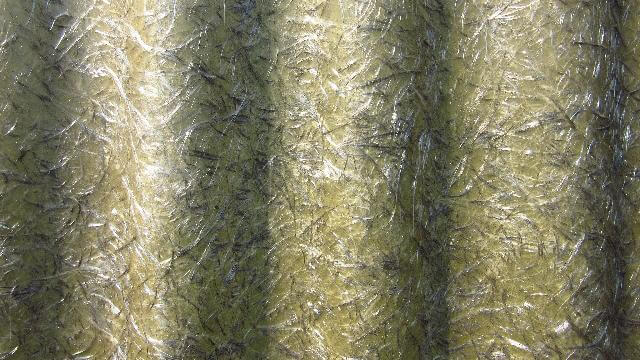Of all the materials we have in our homes, fiberglass is quite common.
But is fiberglass biodegradable? No, fiberglass is not biodegradable. This is because of all the chemicals, resins and other materials it tends to mix with.
They won’t break down in the same way as food or cotton, for example.
Famed for its versatility and durability, fiberglass has a wide range of uses. But, disposing of it does prove to be something of a challenge.
You may not be able to toss it with the regular garbage and recycling is few and far between.
Why Isn’t Fiberglass Biodegradable?
Fiberglass will not decompose in any capacity. It can withstand almost any kind of weather, chemicals and saltwater.
So, if it goes into the regular trash, it will sit in a landfill like a stick in the mud and there are very little recycling options available.
Manufacturers produce five million metric tons of fiberglass each year.
Because of this, it has the potential to have an environmental impact. This comes mostly in part from the fact that it’s not biodegradable.
What Goes Into Fiberglass that Makes It Not Biodegradable?
The components of fiberglass are inherent in its name because it’s glass formulated into a fiber.
During its production, glass melts down to its melting point and then filtered through minuscule holes to create filament. These filaments are so small they measure in microns.
After this, they can undergo further processing in a myriad of ways. Sometimes they mix with resins to strengthen them.
In other instances they’ll weave into other materials, the most popular of these is home insulation for things like carpeting, roofing, construction materials or ceiling tiles.
How Does Fiberglass Present a Hazard to the Environment?
Because of the products it combines with and what it goes into, fiberglass can create a hazard to the environment in a host of ways.
First, it doesn’t decompose in a landfill, so it will sit there well intact for decades and not breakdown.
The Wind Energy Industry
This gets to be cumbersome when you consider how wind energy industries make their turbines out of fiberglass.
When a blade breaks, it goes to the landfill and takes up real estate without decomposing at all.
Potential Formaldehyde
Plus, a common treatment for fiberglass is formaldehyde. When this comes into contact with soil, animals or people, it can create health and contamination issues.
While newer productions of fiberglass no longer use formaldehyde, it does present a problem when throwing away older versions of it.
Fiberglass Is a Pollutant
What’s more, fiberglass can release hazardous pollutants and volatile organic compounds.
This has notoriously and negatively impacted workers, communities, parks, children and wildlife. Therefore, the EPA does have regulation standards to reduce the risk of pollution.
What Is the Best Way to Get Rid of Fiberglass?
The best way to throw away fiberglass will heavily impinge on where you live and what your local laws are. So, it’s best to contact your waste disposal department or city dump to see if you can put fiberglass in the regular trash.
There are some municipalities that will not let you throw it in the garbage and they don’t offer a recycling center for it either.
In other cases, they might let you throw it into the regular trash, but you have to break it down into smaller pieces first.
Observe Disposal Safety Measures
Regardless of your method of disposal, you must cover every inch of your skin. This includes wearing a mask, goggles and gloves.
Fiberglass can create irritation in the eyes, nose, mouth, lungs and skin.
You do not want to breathe in fiberglass particles in any capacity. While scientists say it can’t cause lung cancer, there are many other doctors who say otherwise.
Recycling Potential or Donations
In these sorts of difficult situations, you may have to look around your state for recycling options. There are about 47 different places all over the US that do accept fiberglass for recycling.
Failing your ability to get to these places, you could opt to donate the fiberglass if it’s still in good condition.
Resell or Contact Junk Removal Services
If it’s in some sort of valuable form, like a table or bookshelf, you could resell it too.
When all else fails, you could contact your local professional junk removal service and see what they say about disposing it. For certain locations, calling the pros may be your only option
Conclusion
Unfortunately, fiberglass isn’t biodegradable and you may not be able to put it in with the regular trash. It simply won’t break down at all.
If you’re lucky enough to have access to a recycling center that will accept fiberglass, then you can use that option. But, failing that, the choices for disposal become slim.

